My Brother Excluded My Son Out of His Child-Free Wedding but Invited His Little Cousins

Well here’s a mystery. You’ve surely heard of the Grand Canyon by now. But not of its most hidden secret. Let me explain: The Grand Canyon is like a history book of the Earth, where you can travel back in time just by looking at the rock layers. But here’s the mystery: one billion years’ worth of rocks has vanished without a trace! It’s called the “Great Unconformity” and it has baffled scientists for over 150 years.
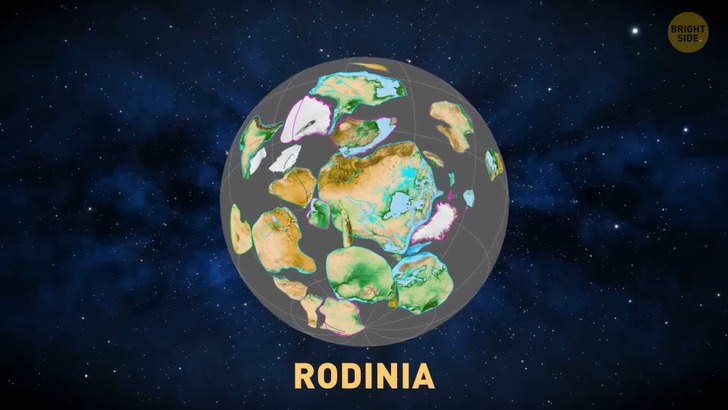
One team of geologists from the University of Colorado may have an explanation for this case. They think that the rocks were washed away into the ocean during the violent breakup of Earth’s ancient supercontinent, Rodinia, around 700 million years ago. The upheaval was so intense that it caused rocks and sediment to disappear from the Grand Canyon, leaving behind a massive gap in the geological record. That same team of scientists went on an expedition to the Grand Canyon and used a fancy method called thermochronology to study the heating history of the rocks. They found out that the Great Unconformity may be even more complicated than previously thought.
It turns out that the eastern and western halves of the Grand Canyon may have undergone different geological changes throughout time. This means that the upheaval may have torn at the eastern and western halves of the Grand Canyon in different ways and at slightly different times, creating the Great Unconformity. The team’s findings are helping piece together what happened during this critical period for the Grand Canyon and other North American sites that have experienced similar periods of lost time. Sure, there are still some pieces to this puzzle that are still missing. But the mystery of the Great Unconformity may finally be solved thanks to the hard work of geologists.
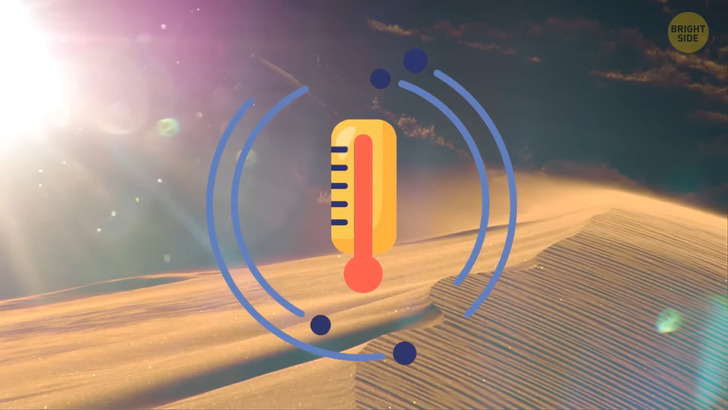
It’s not the only quirky feature of the Grand Canyon. Mother Nature outdid herself with this one! If you’re planning a visit to the Canyon, there’s one thing you absolutely cannot forget: layers! Trust me, it’s like playing the temperature lottery down there. You might start off feeling like you’re in the Sahara desert at the bottom, and end up shivering like a penguin at the top. The elevation in the canyon ranges from a mere 2,000 feet up to over 8,000. That’s a whole lot of climbing!
The Grand Canyon is also home to over 1,000 caves — a literal underground paradise waiting to be explored! Only 335 of them have been documented, and even fewer have been fully mapped out, explored, or inventoried. Now, if you’re looking to get a taste of cave life without all the spelunking and crawling around in the dark, you can book The Cavern Suite, located in the Cave of the Domes on Horseshoe Mesa.
This is the only cave open for visitors to explore. After 6:30 pm (when the park closes), you can have the entire cave all to yourself. No other tourists to photobomb your cave selfies! Plus, you’ll get to enjoy two cozy beds and a 70-foot-high vaulted ceiling. It’s like your very own underground palace! Living in a cave can be tough, so there’s a suite attendant stationed nearby who can bring you food and anything else you need to make your cave stay as comfortable as possible. Never mind the bats. Just kidding.
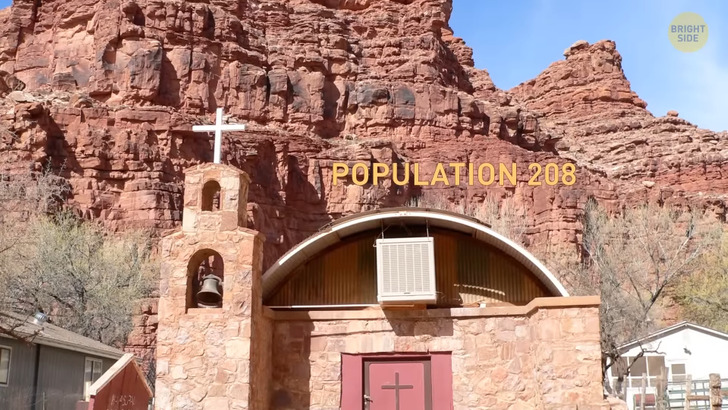
Supai Village is one of those hidden gems, tucked away near the Grand Canyon. Even most Americans don’t know about it! With a population of only 208 people, it’s the perfect place to get away from the hustle and bustle of city life and embrace a life of solitude. It’s so remote that they receive their mail by pack mule! And get this, they don’t even have cars in the community!
A type of rock found in the Grand Canyon is a whopping 1.75 billion years old! That’s almost half the age of the entire planet! Before you start dozing off from all this talk of ancient rocks, let me tell you why this is super interesting. Studying this rock could give us a glimpse into what life was like on earth way back in the day — think of prehistoric creatures, exotic plants, and a landscape that looks like something out of a sci-fi movie. Nah, I wasn’t there.
The rock in the Grand Canyon is even older than me — or anything found in marine or volcanic rock around the world! Next time you’re hiking through the Grand Canyon and you come across a boring old rock, remember that it could hold the key to unlocking the mysteries of our planet’s past.
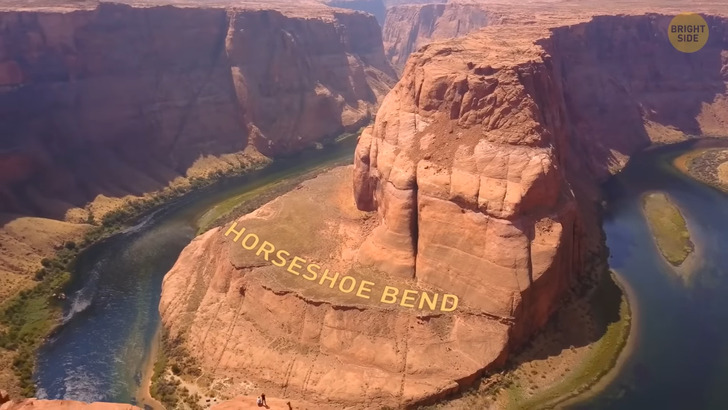
Have you ever seen the iconic Horseshoe Bend of the canyon in the Southwest? The way the Colorado River has eroded the rock over countless eons to create such a dramatic shape is just incredible. It’s important to remember that nothing lasts forever, though. As much as we love the Horseshoe Bend, the forces of erosion are just too powerful to be stopped.
The Colorado River will continue to do its thing, eroding the walls of the canyon and changing the landscape over time. Be sure to book a trip while it’s still available for tourists. Who knows, maybe one day it will become a cutoff meander like The Rincón in Utah, and we can look back at pictures you took and say, “Remember when we saw the Horseshoe Bend?” And you guys will be really, really old.
If you do get to the Grand Canyon, be sure to also stop by Havasupai Falls! It does take a little bit of effort to get there, though. The journey may be long, but the reward is crystal blue waters and totally unexpected, breathtaking falls. It’s located near Supai Village I told you about earlier — the small, isolated community within the Havasupai Indian Reservation. It’s a great opportunity to connect with locals and learn about their unique culture.
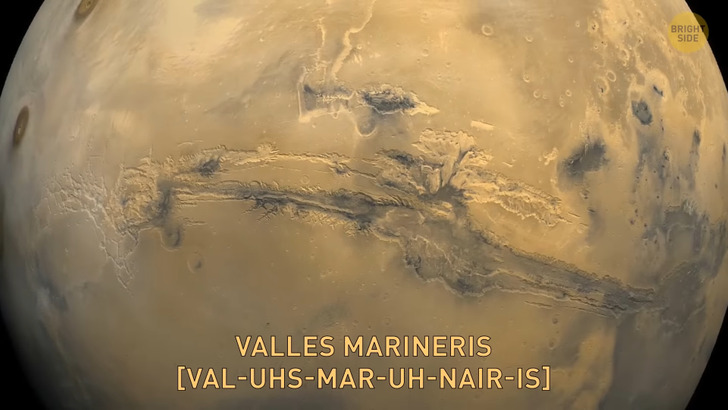
Now, before you grab your backpack and hiking boots, there are a few things you need to know. The land is administered by the Havasupai Tribe, so it’s outside of Grand Canyon National Park’s jurisdiction. That means you need to plan and reserve a spot in the Havasupai campground if you want to stay overnight. So yes, the Grand Canyon is well named; it certainly is grand, awesome, and a bunch of other adjectives; tremendous comes to mind. Yet there’s something even bigger, out in space!
Mars has its own canyon system that makes our local Grand Canyon look like a mere ditch. It’s called Valles Marineris, not to be confused with Pasta Marinera, and it stretches over 2,500 miles! That’s almost one-fifth of the Red Planet’s circumference! Can you even imagine taking a road trip through that massive canyon? You could start in the west in a region of maze-like valleys, and end up in the chaotic terrain near the Chryse Planitia basin. That’s like driving across the entire United States!
But let’s get back to Valles Marineris, shall we? It’s so large that it can be seen from Earth through a telescope. It looks like a dark scar on the planet’s surface. Valles Marineris is full of features that give us clues about how it formed. There are collapse pits created by rushing water, massive floods, and seeping along canyon walls, all of which suggest that water was present at some point in Martian history. There are also cracks in the crust, cliffs and walls, and landslides that have contributed to the formation of this vast canyon.
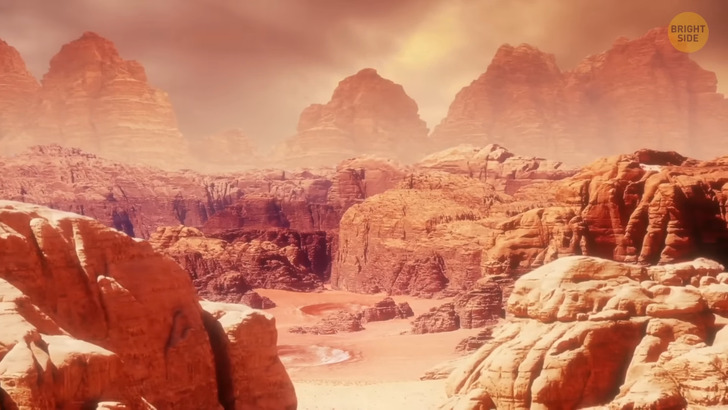
Scientists have proposed various theories about how Valles Marineris formed. Some suggested that erosion during a water-rich past or the withdrawal of subsurface magma were early possibilities. Today, most scientists think that the formation of the Tharsis region may have helped the canyon to form.
The Tharsis region contains several large volcanoes that dwarf those found on Earth, including Olympus Mons. As molten rock pushed through the volcanic region to form the monstrous volcanoes 3.5 billion years ago, the crust heaved upward. (Wouldn’t you?) The strain cracked the crust, causing large faults and fractures across the planet’s surface. Such fractures, growing over time, created the enormous canyon system.
Valles Marineris is not just a massive canyon, it’s also home to a handful of its own volcanoes! They may not be as big as Olympus Mons, but they’re still pretty cool. These volcanic cones are only 200 to 400 million years old, which are just kids, compared to the bulk of Martian volcanism that took place around 3.5 billion years ago. Finally, if you get sleepy thinking about all the canyons, it’s okay, you “can yawn”.











